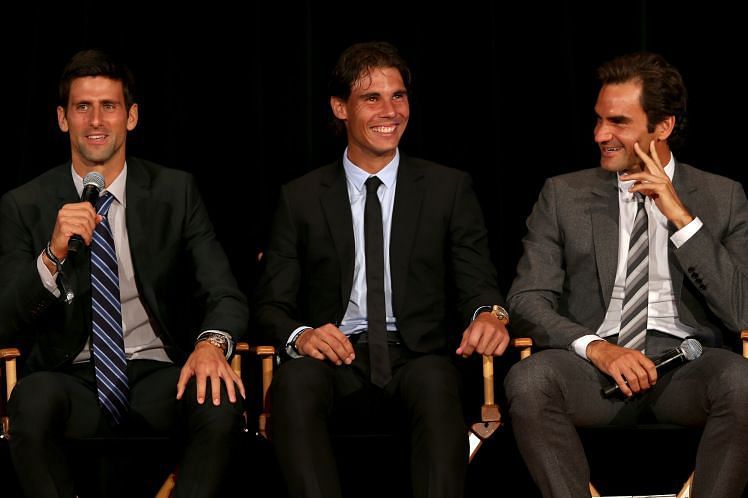
Resurgence and rejuvenation of the ‘Big 3’ in men’s tennis
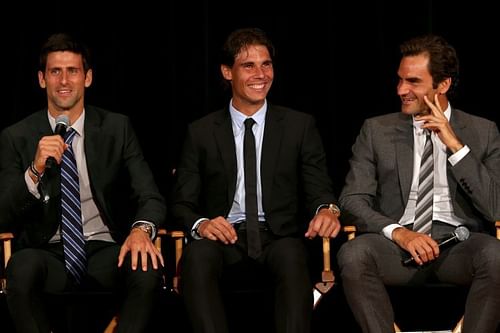
Rafael Nadal and Roger Federer both, somewhat recently, went through a stage in their career tainted with doubt over their future excellence. Doubt cast by the media, pundits and maybe even themselves.
Between August 2012 and January 2017, Federer won no Grand Slam titles, leading the media and pundits to discard his Grand Slam potential. Many suggested that the Swiss Maestro’s best days were behind him and that he may never win another Grand Slam title again.
A lot of this doubt started to creep in around 2013, arguably one of Federer’s worst seasons on tour. He won just one title, in Halle, and had an overall record of 45-17 and a 4-10 record against the top 10 players that season, signalling a major potential dip in his level and fortunes. Moreover, his Grand Slam performance was sub-par by his standards, with the best result being a semi-final appearance in Australia.
True legends and champions fight back and that is exactly what Federer did. He adapted, rehabilitated and came back stronger than ever with powerful groundstrokes and a scintillating, but more importantly much more reliable backhand.
Entering the Australian Open with the number 19 etched next to his name on the draw was an extremely unfamiliar sight.
However, despite having no match play under his belt for months, Federer returned to the winner’s circle with some top notch performances and three thrilling five-set victories, leaving the AO with the title in some style.
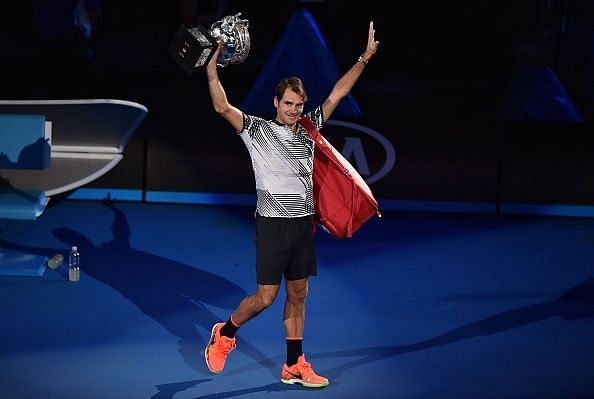
He overcame all odds to become the oldest Grand Slam winner in 45 years. He went ahead to dominate the 2017 season, winning Wimbledon and three Masters titles, and finished an astounding 52-5 for the season. Federer had an incredibly dominant Wimbledon campaign, winning the title without dropping a single set, a remarkable feat for anyone, let alone a 36-year-old. In fact, statistically, Federer had his best serving year in 2017, winning 80% of his first service and 59% of his second service points. Such is the longevity, talent and ability to adapt of the Swiss.
On another front, Rafa Nadal was making a comeback of his own in 2017.
Predicted by several pundits and the media to have a short career due to his gruelling style of play, Nadal had his worst season in 2015, winning just three lower-level titles. His win-loss was also a lowly 61-20, very poor by his previous standards.
Moreover, Nadal’s performance on his beloved clay was also nothing to boast about. His best result in Grand Slams was the Quarter-Final of the Australian and French Open, where his opponents, Tomas Berdych and Novak Djokovic respectively, blew him off the court in three mind-boggling sets.
Despite showing some signs of rejuvenation, Nadal struggled with fitness issues in 2016 and even missed the French Open. It seemed as if the pundits and analysts’ words were starting to come true.
The fighter and champion that he is, Rafa bounced back in a colossal way, against all odds making it to the final of the Australian Open and losing to Federer in five tight sets. Nadal had not progressed beyond the Quarter Finals of a Grand Slam since the 2014 French Open, and this resurgence was very welcome for the fans and evidently meant a lot to an emotional, and, once again, confident, Nadal.
He then went on to win the French and US Open alongside two Masters titles and also claimed the World No.1 ranking in 2017. All in all, 2017 belonged to ‘Fedal’. Nadal won 77% of his second serve points during his first four matches at Roland Garros, an incredibly high number for the second serve. On his way to the title, no player managed to win more than 4 games in a set against him, being unable to even force a 7-5 or 7-6 scoreline. Nadal dropped a mere 35 games on the way to the title, making his run one of the most dominant to a Grand Slam victory. Nadal also led the Men's Tour in terms of second service points won at 60%. This was a significant improvement from the previous season, where the Spaniard had won 54% of his second-serve points.
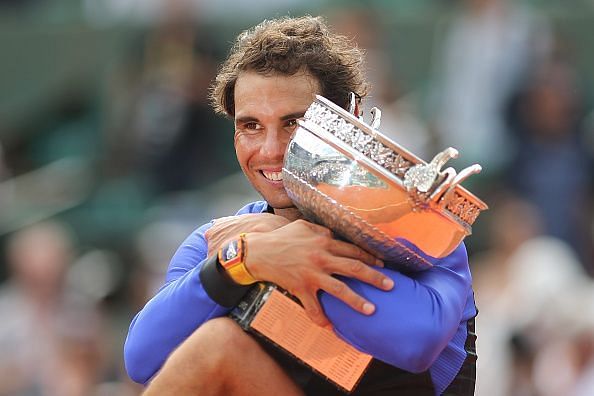
Why is this important? The second-serve is often under attack, especially at key break and set points as opponents look to take advantage of the slower pace, and are aggressive on the return. Winning points behind the first serve is a given of sorts, whereas winning points on a second serve requires work, and is indeed a privilege.
Looking at the 2016 US Open statistics, we note that the average second serve points won were 49%. Federer and Nadal led the way in 2017 when it came to second-serve points won and we can quite possibly attribute a noteworthy portion of their resurgence to an improvement in this metric.
The aforementioned comeback stories point towards what legends are made of. They can rise, consolidate and fall. But then they adapt, recalibrate and come back even stronger. This was evident in Federer’s attacking serve and volley tennis and a much-improved backhand. Nadal too came back with a more reliable and stronger second serve and backhand.
And then we had Novak Djokovic, another all-time great trailing Federer and Nadal, but only just, who had to take a break from the second half of 2017 due to a shoulder injury, after retiring in the Wimbledon Quarter Finals.
Of course, upon his return, the number one goal for Djokovic was to return healthy and be competitive in a sport he loved once again. However, it is hard to imagine that the comeback stories of his contemporaries and prominent rivals did not affect him. It is possible that he must have felt the urge to replicate what they did.
It was Djokovic’s turn now to reaffirm his legend status, after garnering huge successes since the startling manner in which he broke the 'Fedal' duopoly in 2011. He went on to win 3 Majors and 6 Masters titles in 2011, announcing himself to the sporting world in emphatic fashion, alongside making himself a strong contender in the debate for the greatest seasons of all time. Furthermore, he also became the first player since Rod Laver in 1969 to hold all four Grand Slams at once, after securing the elusive French Open Crown in 2016.
After losing his grip on the #1 ranking to Murray, possibly due to a loss of motivation at the fag end of 2016, Djokovic fared poorly in 2017, winning only one title, in Eastbourne, and not making it past the Quarter Finals of any Grand Slam event.
So the rise, consolidation and fall had now all happened for The Djoker. His mettle was to be tested in how he would respond and if at all, he could reestablish himself at the top of World Tennis, like his rivals, Federer and Nadal.
Federer and Nadal’s comeback stories were somewhat immediate and dramatic and made for a great script with the two making it to the Australian Open final and winning 2 Slams a piece that year. However, Djokovic’s story was one of incremental success.
His comeback occurred at the Australian Open too, but he lost to an incredibly athletic and pumped up Hyeon Chung in the fourth round in three tight sets. This was followed by first-round exits at Indian Wells and Miami. Being unable to emulate the immediate success of his rivals upon coming back, many began to cast doubt on his ability to play at his previous levels again.
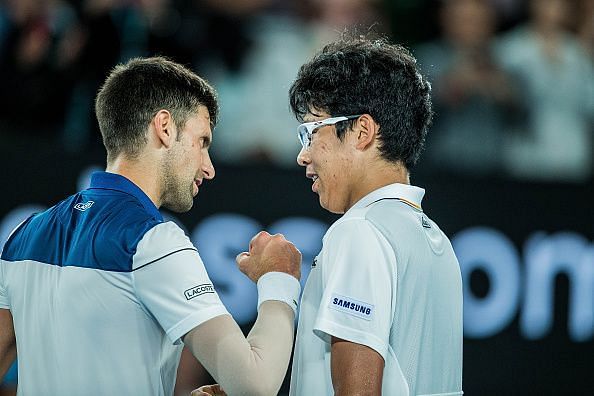
Along their comeback routes, I believe, each of the Big 3 had one match which raised their confidence significantly and set the tone for what lay ahead.
For Federer, it was his blistering performance against Tomas Berdych in the second round of the Australian Open, where he announced his return in a rather bold fashion. For Nadal, it was the gruelling five-setter against Alexander Zverev in the third round, which reminded him that he still has the grit and zeal to win.
I would argue that for Novak, such a match was the Rome Semi-Final against Nadal. Although the Serb lost 7-6, 6-3, the first set was a reminder of the galactic levels and fine margins their previous battles had been characterized by and surely Djokovic took away a lot of positives after playing at a high level against an incredibly dominant Nadal on clay.
This set the tone for an upward trajectory. At the French Open, when some felt that Djokovic was finally getting back to his best, he lost to an inspired Marco Cecchinato in the Quarter Finals. This was a major setback, evident in his post-match reaction when he went to the extent of saying that he may not play the grass season. Legends of his order are not bogged down easily, and use near misses and disappointments to refuel and come out on top. That is exactly what Djokovic did.
Djokovic came back stronger with performances reminiscent of his old dominant self, making it to the Queen’s Final where he lost to Marin Cilic, in three tight sets, despite holding a match point. During this tournament, the Serb also secured his first top-5 victory in a long time, emphatically defeating Grigor Dimitrov 6-4, 6-1. Queens was also his first appearance in a tournament final in over a year.
And then came the big statement. Djokovic defeated his arch-rival and World #1 Rafael Nadal in a scintillating battle of attrition, winning 10-8 in the fifth set of the Wimbledon Semi-Finals.
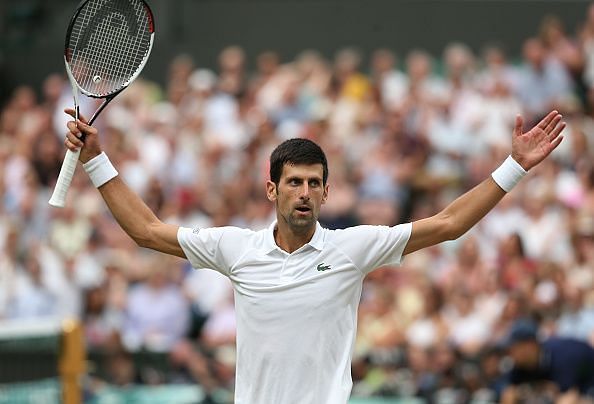
One can only imagine how monumental that must have been for his confidence. Djokovic then vanquished Roger Federer’s conqueror Kevin Anderson in straight sets, winning his 13th Major. The year’s Grand Slams were split among the Big 3 with Federer winning the Australian Open, Nadal triumphant at the French and Djokovic securing a remarkable 4th Wimbledon title.
Djokovic went from 4th round at the Australian Open, Quarter Finals at the French Open, Final at Queen’s Club to securing the Wimbledon Title, the most prized trophy in tennis. Although his comeback was not dramatic the Djoker went about his business quietly, trusting the process, with incremental gains and confidence boosters along the way.
Most importantly, his lethal weapon, the return of serve was back in place. Often dubbed as the greatest returner of serve on tour, Djokovic created 100 break points on route to the title. Just how astounding and impressive is this number? Number 2 on the break points created list was Rafael Nadal, having conjured 68 break point opportunities, trailing Djokovic by a huge margin.
In fact, the 100 break points created by Djokovic were the second most number of break points created since 1992 at Wimbledon. The Serb was also number 2 when it came to return points won on the first serve and return games won. It is important to note that grass is the most favourable surface for the server, and that Djokovic, despite being on a comeback trail, found such prowess against all odds.
We can sit and talk all day about the Big 3 and how they compare to each other, breaking down their performances, statistics and trophies. To understand just how monumental their success is, we need to look at the rest of the men's tour.
As per the data provided by ATPWorldTour.com, 567 men have played at least 200 matches in the 45-year history of the tour and only 277 players have a positive win-loss record.
Djokovic boasts an 808-172 career record, Nadal stands at 908-188 and Federer an astounding 1161-254. This gives the big three a win ratio of 82.45%, 82.85% and 82.05% respectively. Probably even this statistic does not effectively encapsulate or do justice to the nature of dominance established by the Big Three on the ATP World Tour,
The metric for greatness in today’s heavily competitive tennis world is such that the final chapter, that of recalibration and resurgence, is the test of a true champion. And evidently, the Big 3 have passed this test with flying colours, setting a whole new, and quite possibly, unattainable bar, for the current and future generations of Men’s Tennis.